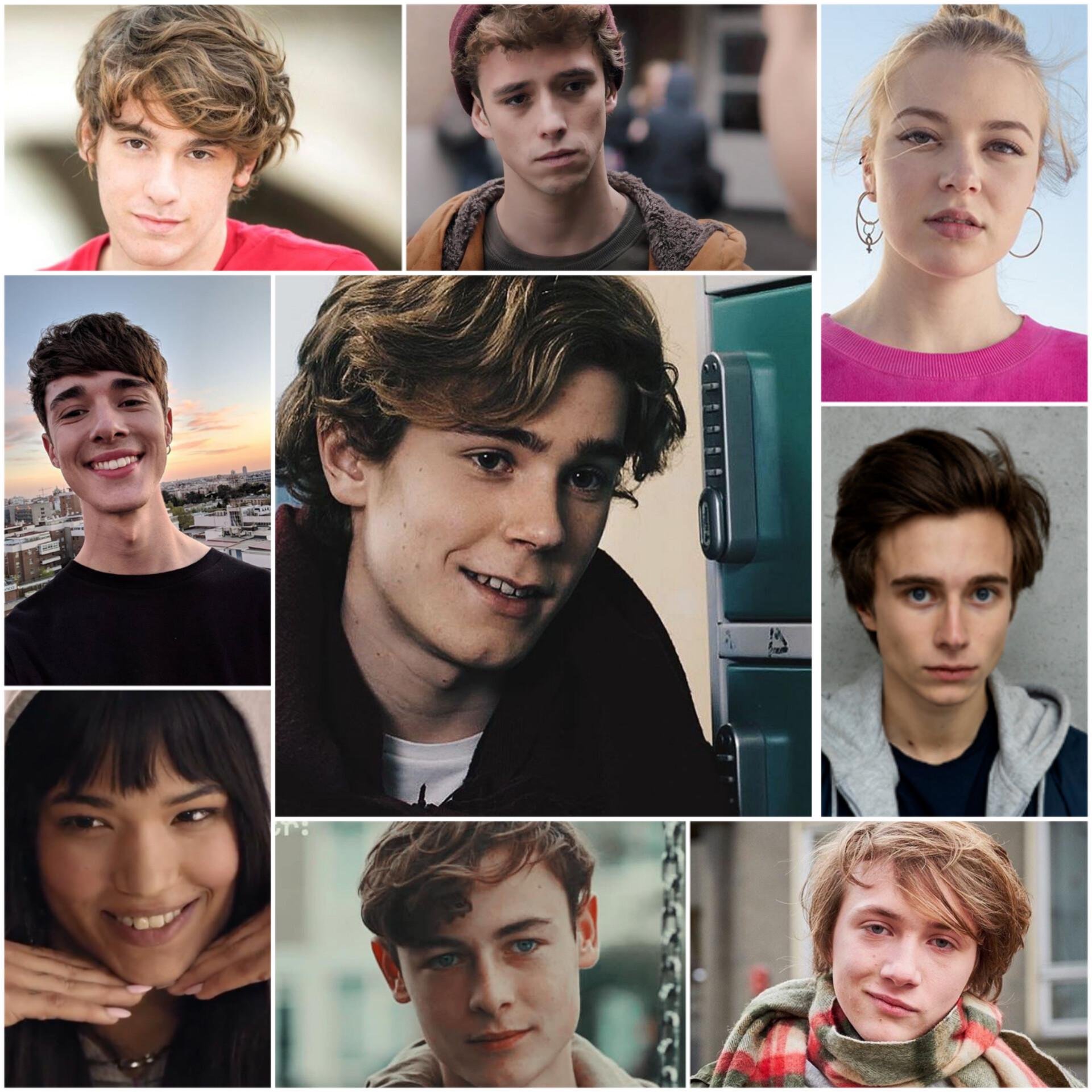SKAM: Ten Years Later
Still from SKAM Season 1 Episode 5 “Hva er det som gjør deg kåt?“, showing the core girl squad.
On September 22, 2025, a Norwegian television show celebrated its tenth anniversary. The Scandinavian series is a cult favorite– one that was translated into dozens of languages, spawned eight international spinoffs, transcended its hemisphere, and left an iconic footprint that no other television show since has managed to replicate. Yet when the first clip of the teen drama SKAM dropped on NRK’s website a decade ago, it was with little fanfare; and they wanted it that way. A team of creators had a vision for how to draw in a new audience, and that was through an innovative technique— the use of social media and sharing over the Internet.
In the early 2010s, Norwegian broadcasting group NRK noticed a gaping hole in their demographic reports: teenagers. Countless in-depth interviews with Norwegian teenagers, investigations into Scandinavian adolescent culture, and more revealed that teens simply didn’t resonate with the media NRK was producing. They wanted a show that felt fresh, a drama that was entertaining without being too far-fetched, that reflected their experiences and struggles and the unique idiosyncrasies that made up their lives.
All of this culminated in the very first draft of SKAM.
Skam (Norsk for shame, often stylized in all caps) ran for four seasons from 2015-2017. Each season dedicated ten episodes to a single character, exploring their personal triumphs, battles, and shames. It received widespread acclaim for its intimate and realistic approaches to friendships, relationships, feminism, beauty standards, assault, sexuality, mental health, religion, Islamophobia, science, social media, and more. Skam did not shy away from important issues that impacted the ever-changing teenage landscape, and made their integrations realistic and down-to-earth.
Reaching their audience was the first step. NRK knew formal marketing would struggle to permeate the dense digital landscape teens dwelled in, so they did something different; they held back, letting their audience come across the show organically, and relying on them to share it via word of mouth and social media. It was a massive leap of faith– the limited marketing and unusual show formal were unlike anything NRK (or anyone) had done before.
SKAM was not an episode-a-week kind of show– instead, short clips of 2-10 minutes were uploaded sporadically throughout the week. Iconic yellow text timestamped the hour and date of a clip, which would be uploaded at the corresponding time. A fight after school would be uploaded at 3:00 Friday, a chat at lunch would populate at noon, and so on. SKAM clips were intended to be a snapshot into the characters’ day, but they happened only when narratively and chronologically necessary. Sometimes “clip droughts” could last days, leaving fans hanging on what was to come, but this was where social media came in.
SKAM was meant to be an immersive view into a teenager’s life, and what better way to see that than through social media?
Season 2 main Noora Sætre’s Instagram feed.
Not only did SKAM have an official set of accounts, but each of the main characters had their own unique social media pages. Through the Instagram accounts of skateboard-loving Jonas or social activist Noora, viewers could gain an insight into their mannerisms, their friends, their beliefs. These tidbits humanized the characters, adding intimate details to their lives and showing how they externally presented themselves to the world. The official accounts took it one step further– the SKAM team created text threads, missed calls, voice memos, and more between the characters and would post them as additional content. These breadcrumbs added another layer of complexity, hinting at storylines to come and shaping the behind-the-scenes dynamics of the characters and their world.
Additionally, the characters were all played by local teens, in a departure from most teen-centered media which tends to feature adults 20 and older.
All of these elements came together in a serendipitous explosion that rocked around the world.
The first two seasons of SKAM, featuring Eva Kviig Mohn and Noora Amalie Sætre, were met with great success in Scandinavia. In 2015, almost half of NRK’s traffic was brought in by SKAM watchers by season two. It was the third season though, featuring Isak Valtersen, which sent the show to new heights. The intimate view into Isak’s struggles with his friends and family, his mental health, and his sexuality resonated with an audience that grew larger and larger.
At home, season three broke streaming records in Norway and throughout Scandinavia. Abroad, the show was proliferated widely on cloudsharing sites like Google Drive, with dedicated fans translating and uploading clips for an international audience. When NRK showrunners announced the show would be ending with its fourth season, featuring Sana Bakkoush, a worldwide fanbase lamented the news. SKAM continued to break records until the end, closing with a blockbuster finale featuring the non-main core crew that remains the second-highest rated episode on the show’s IMDb page.
Ten years after the first clip dropped, SKAM is still widely beloved.
Season 3 main Isak Valtersen and his spinoff/parallel universe counterparts.
SKAM has been remade eight times officially and countless times unofficially (the truly incredible labors of love that are SKAM Brighton and SKAM DC fanworks could be their own essay). Spinoffs in France, Germany, Italy, Spain, the Netherlands, Belgium, the United States, and Croatia have taken the template of the original series and made it their own, putting local touches on some storylines and changing others altogether. While most followed the four season format (or, with the case of SKAM NL and SKAM Austin were canceled), some went beyond that, venturing into unfamiliar territory and creating wholly new storylines, while (usually) keeping a pulse on the lives of teens in their home country.
Despite the international acclaim that SKAM received for its innovative format, it is surprising to see how little it has been replicated. Though social media is an ever-growing factor in all of our lives, few major production companies have utilized it to its full potential in the same way that NRK did with SKAM. However, many smaller filmmakers and creators have utilized SKAM’s clips concept to great success. Eavesdropping, or @eavesdropping.show on Instagram, is one of my favorite shows this year. Over 90 episodes and 368K followers later, they have flawlessly adapted the SKAM method of utilizing snapshot clips to weave together a greater narrative for their slice-of-life, will-they-won’t-they drama. The 180 seconds cap on Instagram Reels leaves the writers with a limited timeframe and drives each clip to pack a punch, and the team behind Eavesdropping continues to deliver every week.
It feels very full circle to be writing this article in my senior year of university, having written about SKAM in my college essay back in high school. While I could talk about the extended SKAMverse for hours (and believe me, I have), writing about SKAM from a solely technical view struggles to capture the culture behind the phenomenon. In an appropriate parallel, a massive online fanbase developed around the show on social media, and in its heyday it was truly something to behold. The anticipation of it all, waiting for clips to drop, checking for translations and extra content, sharing scene analyses and character theories and creative writing, created an electric community that was inextricably tied to the time and place it occurred in. With only two remakes still airing, many have drifted on to different things, but when the ELLE Norge cover celebrating the show’s anniversary dropped this spring, fans around the world came out of retirement to celebrate too.
At the end of the day, it was just a joy to be a part of it all, and I’ll forever be grateful for the experiences, friends, and lessons it gave me. I’ll never think about yellow curtains and parallel universes the same. In full acknowledgement of cliche, I’ll leave you with the same final messages they left me: Everyone is fighting a battle you know nothing about. Be kind, always. Alt er Love. And to SKAM, takk for alt.
Still from ELLE Norge’s SKAM 10 Years feature, showing the girl squad actresses.




